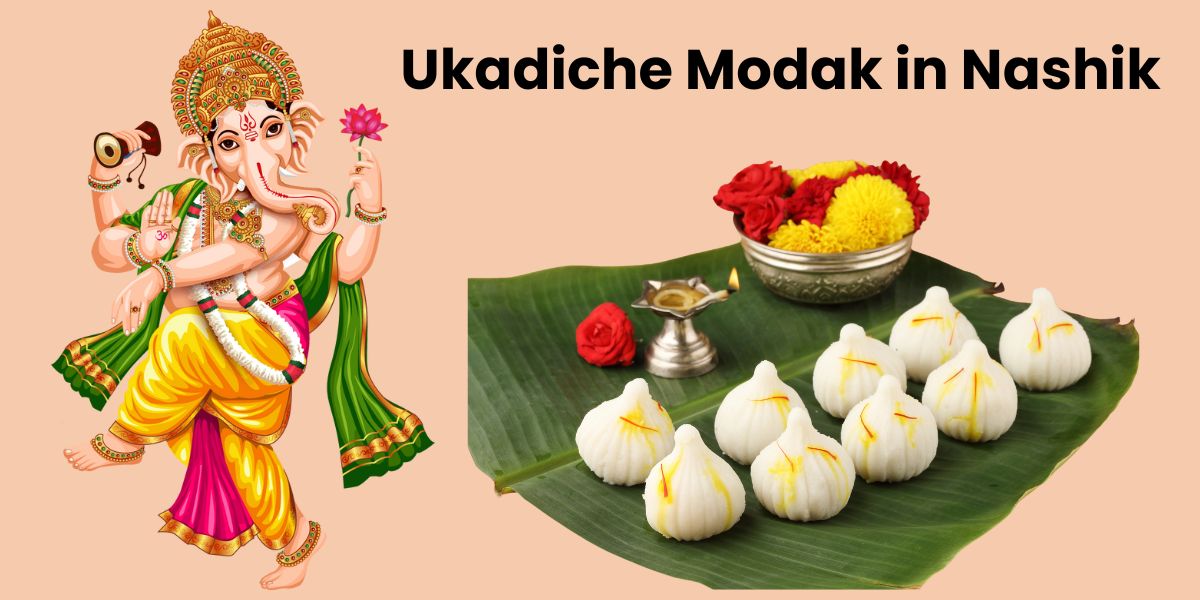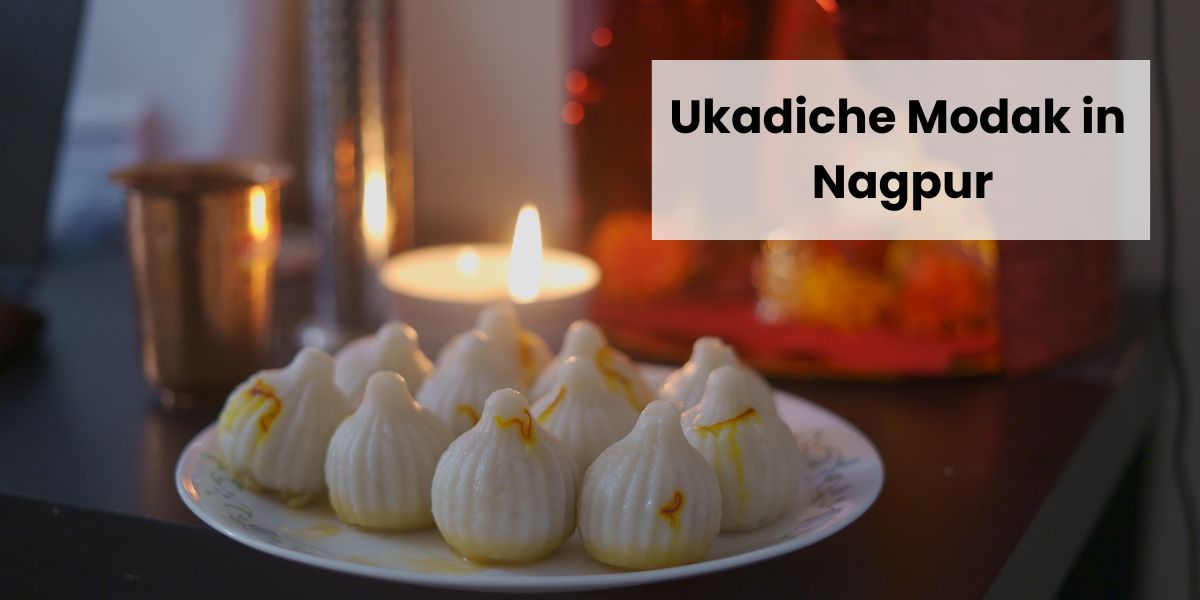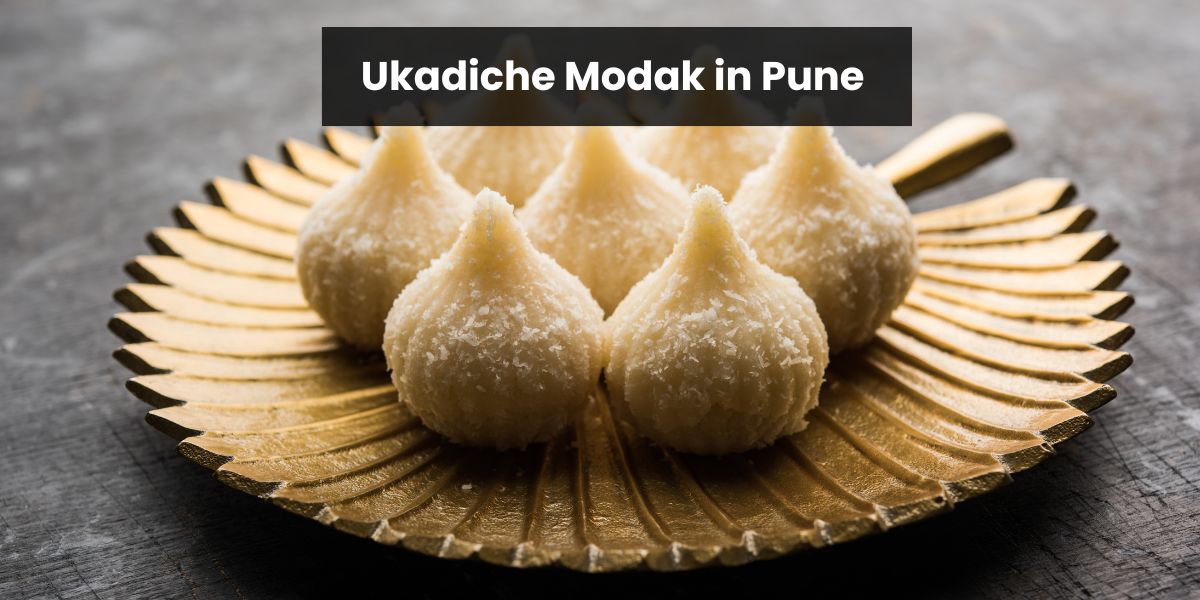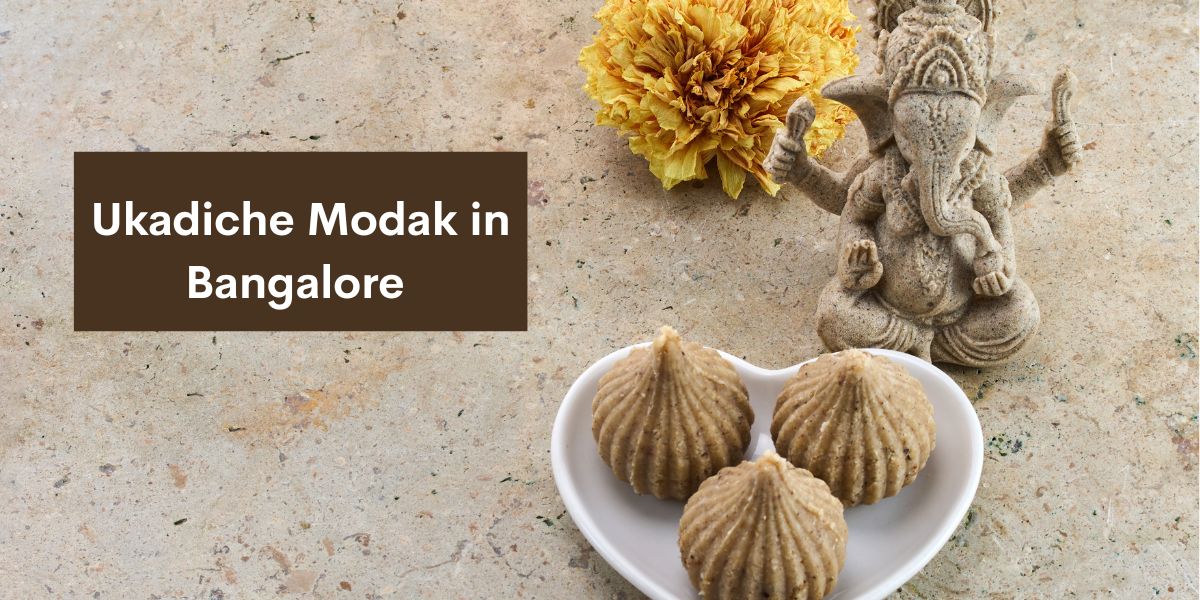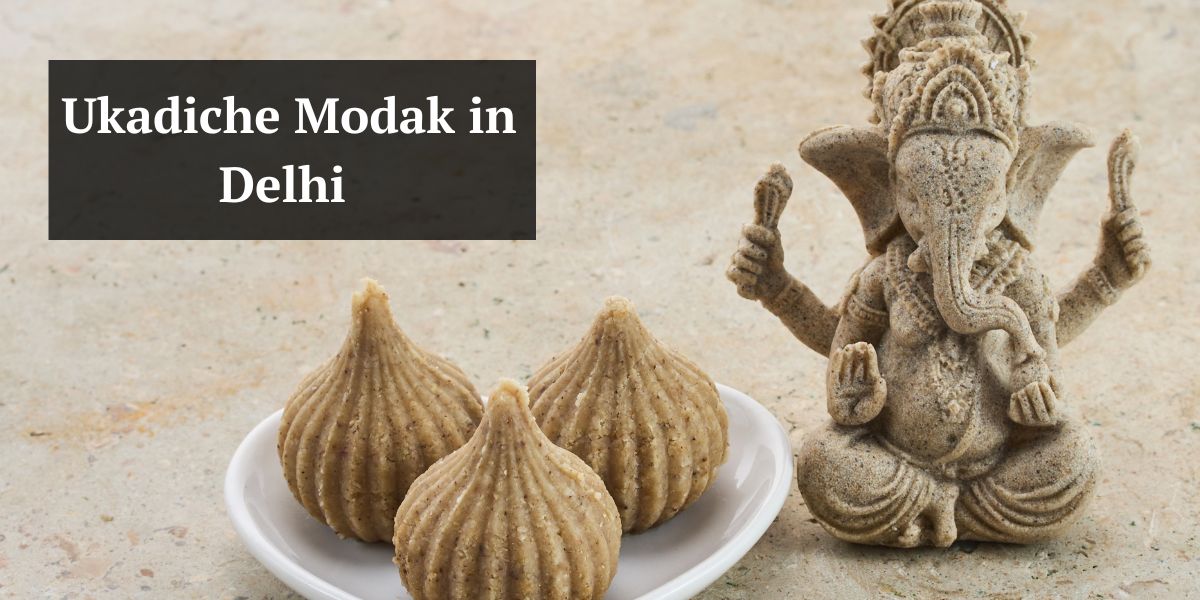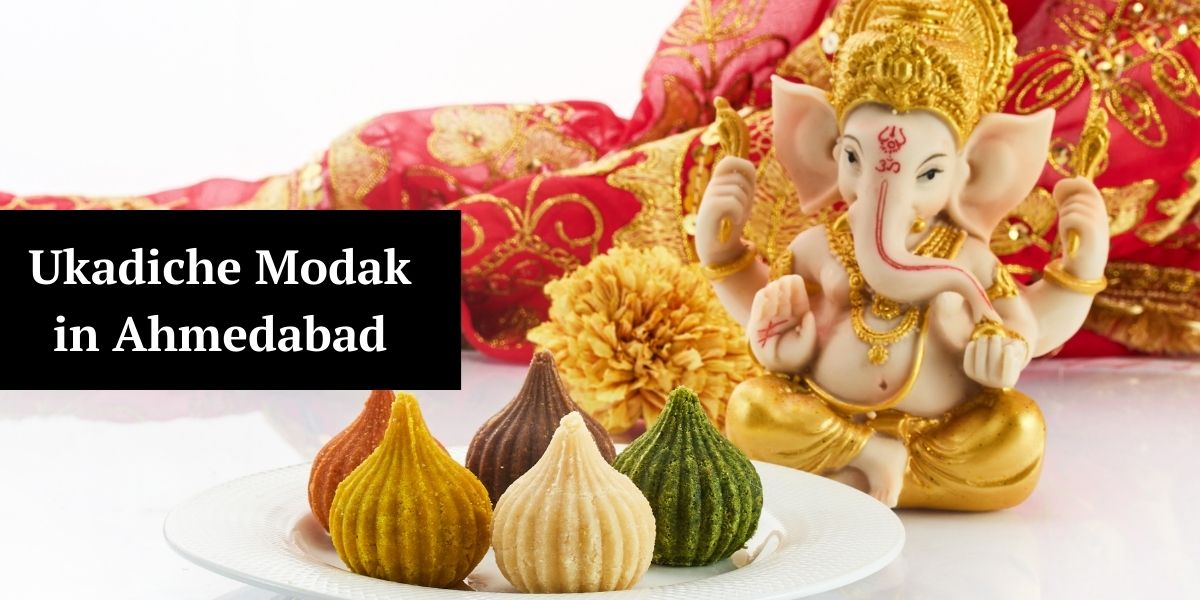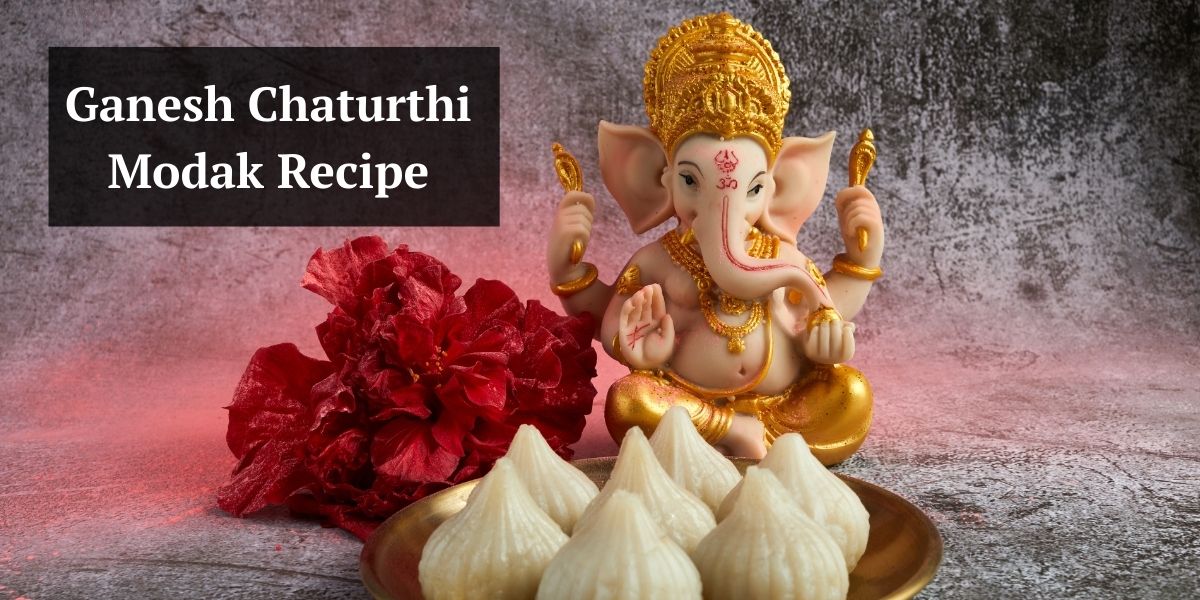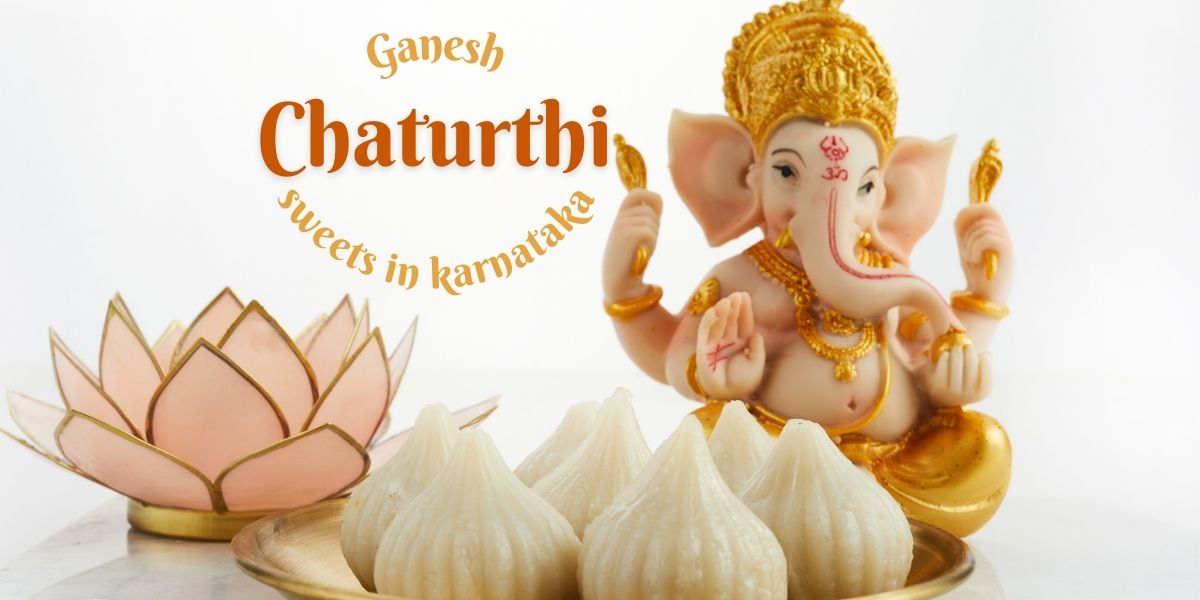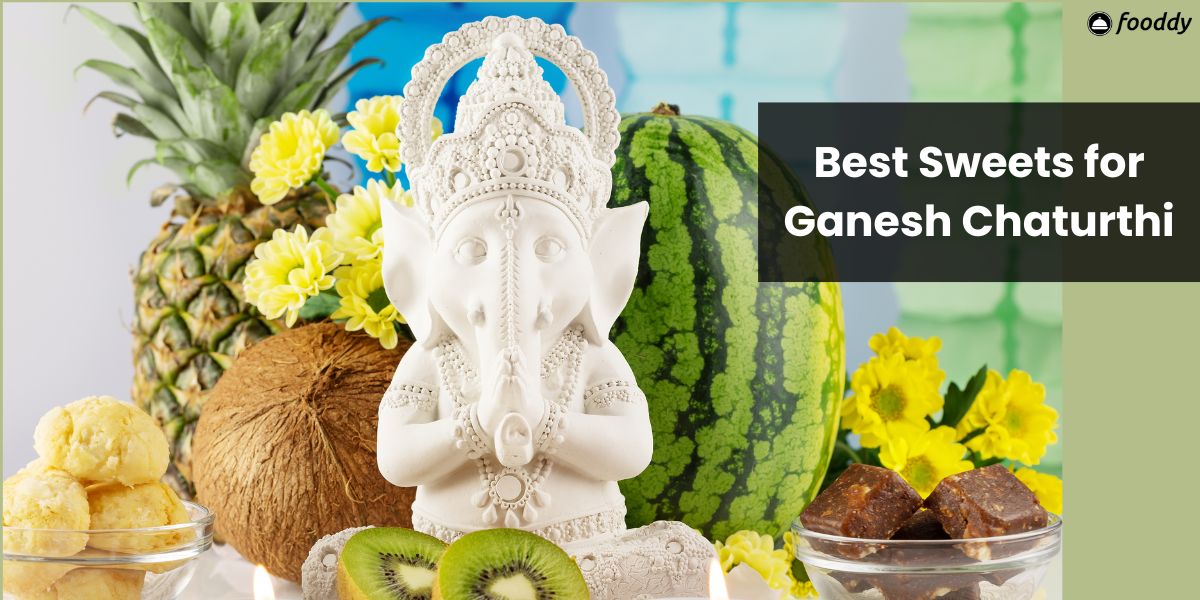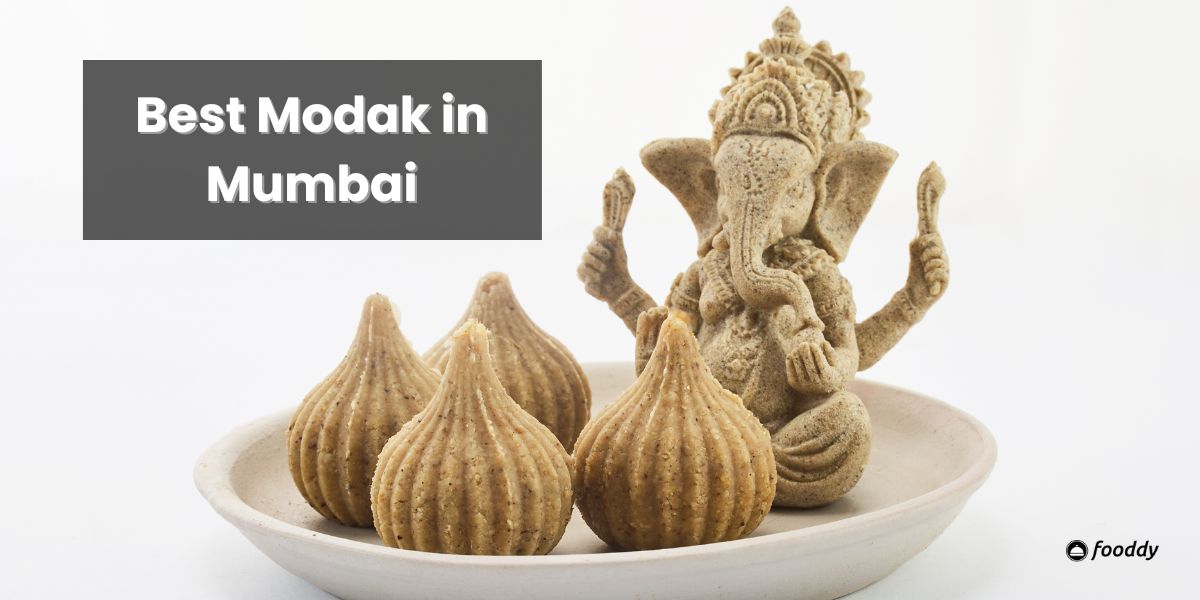In the sacred city of Nashik, where devotion infuses every temple ghat and the Godavari river maintains centuries-old rituals, the occasion of Ganesh Chaturthi has great spiritual and cultural significance. The event would not be complete without one precious treat, the Ukadiche Modak, in addition to colourful aartis, idols covered with flowers, and echoing cries of “Ganpati Bappa Morya”. In this blog, we’ll guide you through everything you need to know about Ukadiche Modak in Nashik—from the best places to buy them and local vendors near you, to price trends and ordering tips during the festive rush. Whether you’re looking for prasad-quality modaks or gift-worthy fusion versions, this blog will help you make an informed (and delicious) decision.
A soft dumpling filled with a sweet coconut-jaggery filling and wrapped in a thin layer of rice flour dough is called ukadiche modak, or “steamed modak” in Marathi. According to popular belief, Lord Ganesha adores this sacrifice above all others. Traditionally made at home and given fresh following the Ganesh puja, it is more than simply food; it is an offering of love and respect.
One of the greatest locations in Maharashtra to experience real Ukadiche Modak is Nashik, which has deep Maharashtrian cultural origins. From heritage sweet shops and age-old halwais to new-age home chefs and eco-friendly cloud kitchens, the city offers a beautiful blend of tradition and innovation. As Ganesh Chaturthi approaches each year, the demand for this divine delicacy rises, with devotees queuing up at dawn to collect their modak offerings or placing pre-orders weeks in advance.
Best Ukadiche Modak in Nashik
While many Nashik households take pride in preparing Ukadiche Modaks at home, the city also boasts some excellent sweet shops and small businesses that specialise in crafting these divine treats. Most shops begin production weeks in advance and ramp up availability during the 10-day Ganesh festival.
Here are some of the top places to find Ukadiche Modak in Nashik, focusing on authenticity, taste, and overall customer experience:
1. Sayantara Sweets (Shalimar Chowk)
Sayantara, one of Nashik’s oldest and most revered sweet shops, is well-known for its Maharashtrian candies and Ganesh Chaturthi specialities. Their smooth shell and fragrant filling of jaggery and freshly grated coconut make their Ukadiche Modak a customer favourite.
- Why people love it: No shortcuts—everything is made fresh and steamed in banana leaves.
- Bonus: Offers special prasad boxes for Ganesh puja.
- Availability: Only during the Ganesh Chaturthi week, with pre-orders recommended.
2. Shrinivas Sweets (College Road)
A go-to spot for traditional modaks in West Nashik, Shrinivas Sweets combines old-world flavours with modern packaging. Their modaks are smaller in size, making them ideal for naivedya and prasad distribution.
- Speciality: Silky rice flour shell, subtle cardamom aromas, and well-balanced sweetness.
- Packaging: Clean and travel-friendly, suitable for gifting.
3. Suyog Sweets (Panchavati)
Suyog Sweets serves both local devotees and temple visitors and is situated close to the city’s spiritual centre. Similar to Kolhapuri-style modaks, their Ukadiche Modaks are a tad stiffer and have a richer, darker jaggery.
- Taste profile: Earthy and traditional with an old-school charm.
- Recommended for: Those seeking a more robust, non-fusion version.
4. Kadam Sweets (Nashik Road)
Kadam Sweets has a large local following and is well-known for its fresh morning batches and festival rush. To meet demand, they frequently release two batches per day during Ganesh Chaturthi.
- Why visit: Economical, tasty, and fast service.
- Tip: Call ahead for pre-ordering, especially if you need bulk modaks.
5. Sweet Nest by Home Chefs (Indira Nagar & Gangapur Road)
Making Ukadiche Modaks by hand using ancient recipes has allowed a number of home-based cooks in Nashik to carve out a place for themselves. These modaks are made with premium ingredients like fresh coconut and organic jaggery in tiny quantities.
- How to order: You can place an order through local food aggregators like NashikFoodie, Instagram accounts, or WhatsApp business groups.
- Customisation: Sugar-free, dry fruit, and saffron versions available.
Related – Ukadiche Modak in Nagpur
Ukadiche Modak in Nashik Near Me
One of the best things about Nashik during Ganesh Chaturthi is that Ukadiche Modak is always close by, whether you dwell in the more modern residential areas like Indira Nagar or the more ancient spiritual quarters in Panchavati. Obtaining this popular holiday treat is now easier than ever due to the rise in confectionery stores, home cooks, and seasonal food sellers.
Here’s a neighbourhood-wise guide to help you locate the best Ukadiche Modak near you in Nashik:
1. Panchavati & Nashik Old City
This is where tradition lives on. With its proximity to major temples like Kalaram Mandir, Panchavati is rich with cultural heritage, and that includes sweets. During Ganesh Chaturthi, shops like Suyog Sweets and local halwais set up dedicated stalls for modaks right outside temples.
- Ideal for: Prasad-quality modaks and prompt pickups in the morning following a temple visit
- Tip: Early mornings (7–10 AM) are the best time to find fresh modaks
2. Indira Nagar & Gangapur Road
Many working families and food entrepreneurs reside in these contemporary residential districts. Several local modak manufacturers have developed devoted clientele in this area over the past few years, distributing handcrafted Ukadiche modaks through Instagram and WhatsApp.
- How to order: Search on Google, Instagram, or join local food groups like Nashik Eats and Indira Nagar Foodies
- Options available: Gluten-free, jaggery-only, saffron-infused, and dry fruit modaks
3. Nashik Road & Deolali Camp
With its vibrant markets and railway connectivity, this area is bustling during festival time. Shops like Kadam Sweets and Ganesh Bhandar sell modaks in bulk, catering to both local families and travellers passing through.
- Ideal for: Bulk buying, gifting, or train travellers wanting to take modaks along
- Extra note: Many sweet shops here offer discounts on 20+ piece orders
4. College Road, Canada Corner & Dwarka
This central belt of Nashik is home to some of the city’s most popular mithai shops like Shrinivas Sweets, Sayantara, and New Anand Sweets. These shops focus on variety and volume, offering traditional Ukadiche Modaks along with fried, chocolate, and kesar variants.
- Best time to buy: Between 9 AM and 12 PM or after 5 PM when second batches are available
- Perfect for: Last-minute shopping or gifting needs
5. Satpur & Ambad MIDC (Industrial Belt)
Even in Nashik’s industrial areas, modak availability is growing, especially through canteens and workplace tiffin services that include modak as part of their Ganesh Chaturthi thalis.
- Best source: Corporate canteens, office tiffin services, and vendor tie-ups
- Pro tip: Some factory outlets of sweet shops in this area offer fresh batches at discounted rates
Ukadiche Modak in Nashik Price List
The price of Ukadiche Modak in Nashik depends largely on three key factors—ingredients, type of preparation, and place of purchase. While local sweet shops keep it affordable for daily offerings, premium home chefs and boutique sweet makers offer enhanced versions at a higher price.
For your information, below is a thorough price breakdown
Traditional Ukadiche Modak
| Quantity | Price Range (Approx.) |
| Per piece | ₹20 – ₹35 |
| Box of 6 | ₹120 – ₹180 |
| Box of 12 | ₹240 – ₹350 |
- Common at: Sayantara, Kadam, Suyog Sweets
- Features: A traditional preparation that involves steaming a fragrant mixture of freshly grated coconut and jaggery, often enclosed in banana leaves or shaped using age-old moulds for an authentic touch
Premium/Fusion Modak Varieties
| Type | Price (Per Piece) |
| Kesar Ukadiche Modak | ₹40 – ₹60 |
| Dry Fruit Stuffed Modak | ₹50 – ₹75 |
| Sugar-Free Modak | ₹55 – ₹70 |
| Vegan/Gluten-Free Modak | ₹60 – ₹85 |
| Chocolate Modak (Fusion) | ₹45 – ₹65 |
- Available at: From home-based culinary experts in Indira Nagar to premium outlets like Sweet Nest and upscale speciality stores
- Perfect for: Gifts and devotional offerings specially curated for families prioritising health and well-being
Bulk Order Prices (For Prasad Distribution or Events)
| Quantity | Estimated Price Range |
| 25 Modaks | ₹500 – ₹750 |
| 50 Modaks | ₹1000 – ₹1400 |
| 100+ Modaks | Custom Quote Required |
- Bulk deals: Many shops offer 5–10% off on orders placed a week in advance
- Packaging: Options include eco-friendly leaf boxes, plastic trays, and gift packs
Tips to Get the Best Price:
- Pre-order early (at least 3–5 days before Ganesh Chaturthi)
- Consider ordering from home chefs—often more affordable for small quantities
- Ask for combo deals (e.g. steamed + fried + chocolate modaks)
Conclusion
In a city as spiritually rich and culturally grounded as Nashik, the tradition of offering Ukadiche Modak during Ganesh Chaturthi goes beyond food—it becomes an act of reverence. Whether it’s families lovingly making them at home before the morning aarti or devotees lining up outside sweet shops before sunrise, the humble modak unites people in celebration and devotion.
Nashik, being one of Maharashtra’s prominent cultural hubs, offers a beautiful blend of traditional flavours and modern accessibility when it comes to modaks. From old favourites like Sayantara and Suyog Sweets to emerging home chefs in Indira Nagar and Panchavati, the city ensures that no one celebrating Ganesh Chaturthi has to miss out on this sacred sweet.
Whether you’re a purist looking for a soft, ghee-drizzled modak with freshly grated coconut or someone curious to try a sugar-free, saffron-infused version, Nashik’s evolving modak scene has something for everyone. And with growing online availability and doorstep deliveries, getting your modaks on time and fresh is now more convenient than ever.
Let the deliciousness of Ukadiche Modak be more than just a pleasure during Ganesh Chaturthi. Let it serve as a blessing, an offering, and a custom that ties you to your heritage, culture, and religion—things that go beyond a simple celebration.
FAQs
Q1. Where in Nashik can I locate the best Ukadiche Modak? Ans:- Suyog Sweets, Shrinivas Sweets, and Sayantara Sweets are among the best-rated locations. Check out the local chefs in Gangapur Road and Indira Nagar for handcrafted, home-style modaks.
Q2. How much does a Ukadiche Modak cost in Nashik? Ans:- Typically, traditional modaks are priced in the range of ₹20 to ₹35 per piece, depending on the ingredients and place of purchase. The price of each premium variant with saffron or dry fruits can range from ₹50 to ₹75.
Q3. Can I place an online order for modaks in Nashik? Ans:- Indeed. A lot of home cooks accept orders via local food pages, Instagram, or WhatsApp. Pre-order alternatives with local delivery are available at certain confectioneries.
Q4. Does Nashik provide vegan or sugar-free modaks? Ans:- Of course. On request, a number of home-based cooks now serve Ukadiche Modaks that are sugar-free, jaggery-sweetened, or even vegan.
Q5. How far in advance should I pre-order modaks? Ans:- Ideally, place your order 3–5 days before Ganesh Chaturthi, especially if you want bulk quantities or special customisations.
Q6. Do modaks stay fresh if stored overnight? Ans:- Ukadiche Modaks are best consumed fresh within 6–8 hours. However, they can be stored in an airtight container in the fridge and lightly steamed or microwaved the next day.
Q7. Can I get bulk modaks for distribution or events? Ans:- Yes. Most sweet shops and home chefs offer bulk discounts for 25+, 50+, or 100+ modaks, often with eco-friendly or festive packaging.

